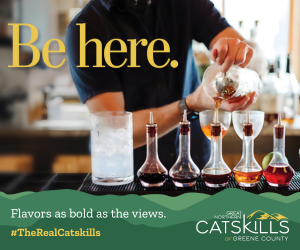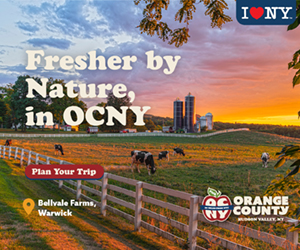We sat down with grower, winemaker, and author J. Stephen Casscles to discuss the newly-released second edition of his book, Grapes of the Hudson Valley and Other Cool Climate Regions of the United States and Canada [Flint Mine Press 2023], and to talk about what insight it offers grape growers trying to mitigate the effects of climate change by growing native varietals. This landmark book delves into grape history, identification, and growing, and has been expanded to include little-known New England grapes developed in the early nineteenth century. Casscles makes a case for growing more of them today.
First, why did you set out to write this book?
JSC: Many people don’t realize that all grapes, even vinifera, are hybrids of one sort or another. My goal for the first edition was to bring to light the genetic heritage of grapes commonly used for winemaking in the Hudson Valley and to present the work of the hybridizers who either stumbled upon them or purposefully bred them so that we can better understand their purpose and use in the cellar.

So, what’s new in the Second Edition, and why include New England grape varieties?
JSC: The Second Edition contains two important new chapters on the rarely covered 19th-century heritage grape varieties developed in New England. History seems to have overlooked the New England breeders from this era and their interaction with each other and many Hudson Valley breeders. Not only have they added significantly to America’s horticultural legacy, but genetic material from their activities continues to be used to this day to develop newer grape hybrids.
I grow many of these varieties, such as the E. S. Rogers hybrids – Agawam, Salem, Massasoit, Lindley, and Wilder – and grapes bred by other lesser-known New England breeders, such as Ephraim Bull, Captain Moore, Diana Crehore (one of the few women grape breeders in the US) at my vineyard in the mid-Hudson Valley. Like many of the Hudson Valley-bred hybrids, I find these grapes to be hardy, fungus- and disease-resistant, and often very productive in the field.

This new edition offers guidance to growers and wineries everywhere, as we jointly face the impact of global climate changes. The cool climate grape varieties covered in this book will help growers to identify and plant grapes that can be grown more sustainably and are more productive, and still make quality wines, as well co-fermented beer, cider, and other distilled products.
How can hybrid grapes lessen the impact of climate change? What are the takeaways for sustainable grape growing?
JSC: Fruit growers and winemakers are looking to identify those grape varieties that can roll with the punches of our rapidly changing climate. These climatic changes are bringing much warmer temperatures in summer, more violent weather patterns, more frequent severe droughts followed by floods (like 2022), and warmer winters punctuated by Arctic blasts. This all increases the chance of injury to vines and orchard crops.
It’s more important than ever for wineries to find more grape varieties that they can grow reliably and consistently every year, and winemakers are starting to work with growers more closely to determine what hardy and sustainable grape varieties will make quality wines. In the book, I document my experience growing and making wine with these grapes for more than three decades.

author’s farm. Photo: J. Stephen Casscles
Are there any new findings in grape genetics since the first edition?
JSC: The book does include new research and revelations about the genetic ancestry of certain grape varieties. Spoiler alert! It updates the genetic history of Catawba and Concord, now that it was officially determined that Catawba’s parentage is actually one-half vinifera (Sémillon), and that Concord is an offspring of Catawba. This means that Concord is one-quarter vinifera! This is a significant finding because there are many Concord and Catawba heritage hybrids, such as Iona, Jefferson, Diamond, and Diana, which have been conclusively determined to have European vinifera heritage.
Further, the new edition covers current research delineating the ancestry of some French-American grape varieties, such as Chambourcin and Vignoles.
What makes this book relevant for local growers?

JSC: The new Second Edition evaluates more than 200 cool climate grape varieties with an eye towards assisting fruit growers and winemakers across the United States, Canada, Northern Europe, and Northeast Asia to identify grape varieties that are hardy, fungus-disease resistant, and productive so that they can be grown either in a sustainable manner with minimal pesticide applications, or in some cases, organically. As I mentioned earlier, in this book, in addition to assessing each variety’s prowess in the field, I assess its capability to produce quality wine or other alcoholic beverages. The book is also relevant for those who want to establish vineyards further north than had been thought possible before.
Who would benefit from reading this book?
JSC: There’s something for everyone: If you are a wine or beer consumer, retailer, environmentalist, fruit grower, winemaker, university professor, or government official, you’ll find this book a useful guide. To order a copy, visit flintminepress.com.





